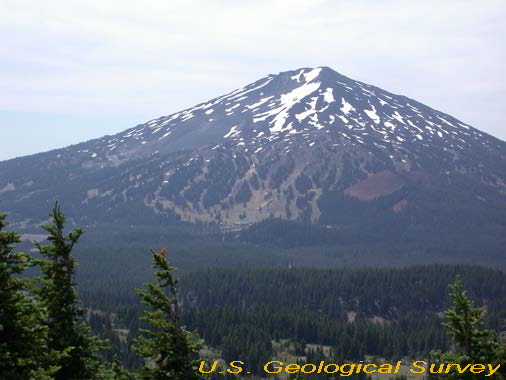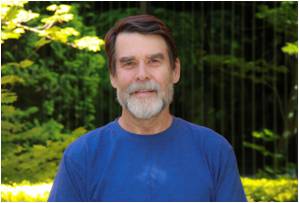Mount Bachelor Volcanic Chain Field Trip
September 23, 9:00 AM to 5:00 PM

The Mount Bachelor volcanic chain is a 25-km long zone of shield volcanoes and cinder cones that erupted over several millennia during and after the end of the last major Pleistocene ice age. Despite the relative short duration of activity, eruptions of the chain emplaced about 40 km3 of lava flows and fragmental deposits, a volume that is similar to that of the Three Sisters and Broken Top combined. On this field trip we will discuss the age of the volcanic chain, relation to glacial events and deposits, tectonic influences, eruptive styles, and the petrology and geochemistry of eruptive products. We will also consider the importance of eruptions like the Mount Bachelor chain to growth of the central Oregon segment of the Cascade volcanic arc.
This field trip will be led by Cynthia Gardner and William Scott, both from the U.S. Geological Survey—Cascades Volcano Observatory. The trip is appropriate for all levels of geologic background, but will emphasize in-depth discussions of the volcanic history of the central Oregon Cascades. Total walking distance will be less than 2 miles, some of which may be over uneven ground.
Additional materials and background information:
Scott, W. E. & Gardner, C. (1990). Field Trip Guide to the Central Oregon High Cascades, Part I: Mount Bachelor-South Sister Area. Oregon Geology , 52, pp. 99-117.
Scott, W. E. & Gardner, C. (1992). Geologic map of the Mount Bachelor volcanic chain and surrounding area, Cascade Range, Oregon. U.S. Geological Survey Miscellaneous Investigations Map , I-1967

Cynthia A. Gardner
U.S. Geological Survey—Cascades Volcano Observatory
Email: cgardner@usgs.gov
I’ve worked with the USGS since 1980 (starting as a Physical Science Technician) and began working in volcanology in 1983. My major projects include volcanic history (using paleomagnetic-secular variation techniques), eruptive processes, and volcanic hazard studies in the Cascades (Baker, Bachelor, Mount Hood and Mount Shasta), at several Alaska volcanoes (Redoubt, Spurr, and Augustine), and in Nicaragua (Momotombo, Telica, and Cosequina). I’ve participated in five eruption responses, Redoubt Volcano, Alaska 1989-1990; Crater Peak, Alaska, 1992; Soufriere Hills, Montserrat, 1995; Mount St. Helens, Washington, 2004–2008; and Kilauea, Hawaii, 2018, and am especially interested in the start and endings of eruptions. I also enjoy working with emergency managers to hopefully prevent future volcanic crises from becoming volcanic disasters. I was the eruption coordinator for the Mount St. Helens 2004–2008 eruption and was Scientist in Charge at USGS’s Cascades Volcano Observatory from 2005–2010.

William E. Scott
U.S. Geological Survey—Cascades Volcano Observatory
Email: wescott@usgs.gov
I’m a Geologist Emeritus since retiring in 2015 after a 40-year career with USGS. My major projects include volcanic history, eruptive process, and volcanic hazard studies in central Oregon, at Mount Hood, and several Alaska volcanoes; investigations of eruptive processes and hazards at erupting volcanoes including Mount St. Helens, 1980 and 2004-present; Redoubt Volcano, Alaska, 1989-90 and 2009; Mount Pinatubo, Philippines, 1991-92; and Soufriere Hills, Montserrat, West Indies, 1997. Fields of interest include volcanology, volcano-hazard assessment, and volcanic-risk mitigation. Between 1997 and 2003 I served as Scientist in Charge at USGS’s Cascades Volcano Observatory.